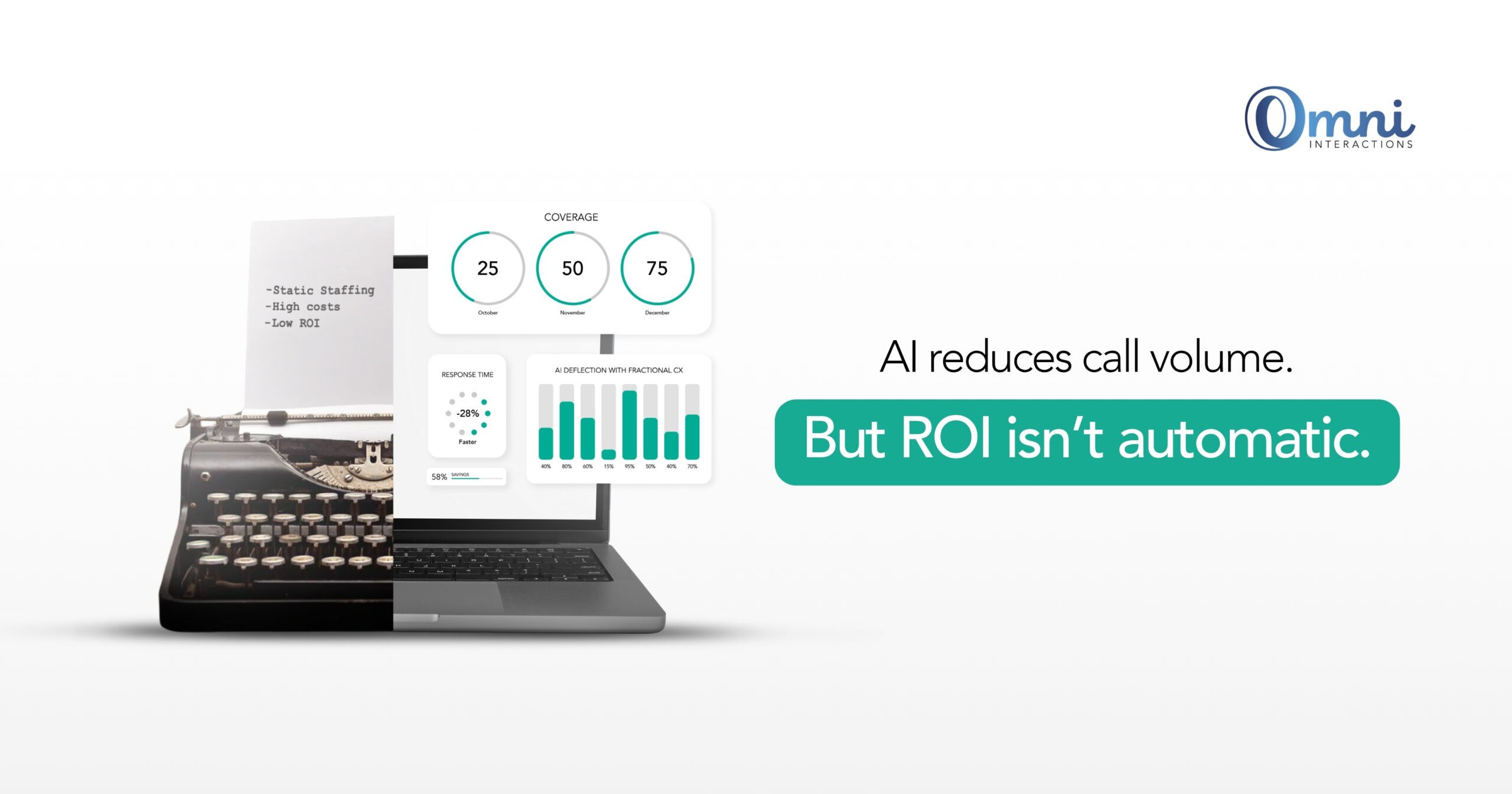AI is everywhere in customer service. Bots answer FAQs, voice assistants route calls, and machine learning predicts what customers need before they even ask. For CX leaders, AI promises fewer calls, faster resolutions, and lower costs.
But here’s the uncomfortable truth: AI savings often look better on a slide deck than they do in the budget.
Why? Because the workforce sitting behind AI is usually too rigid to capture the benefits.
Where the ROI Vanishes
AI reduces call volume by 15–30% in many organizations. That’s real progress. But if staffing models don’t flex with the new demand, costs stay flat.
The issues are clear:
- Traditional scheduling: Traditional FTEs stay fixed even when AI trims demand by the hour.
- Unproductive coverage: Teams remain staffed for call patterns that no longer exist.
- Leadership skepticism: CFOs don’t see savings, making them hesitant to fund future AI investments.
The result: AI’s impact is muted. Efficiency gains evaporate into unproductive time, and ROI gets stuck in theory.
The Flexibility Gap
Workforce models designed decades ago can’t keep up with the agility of modern AI. When call arrival patterns change daily, or hourly, traditional schedules are a mismatch.
This is the gap between AI’s potential and its realized ROI: the workforce.
How Fractional Workforce Unlocks AI Savings
Enter Fractional Workforce Solutions. Unlike traditional models, fractional staffing flexes in 30-minute increments through jump-on/jump-off scheduling.
That means:
If AI deflects 20% of calls in the morning, staffing flexes down in that same window. If calls spike in the evening, coverage ramps up immediately. Costs align with reality, not forecasts.
With fractional workforce, AI savings aren’t stuck in theory, they show up as actual budget relief.
Why This Partnership Matters
AI and Fractional Workforce aren’t competing solutions. They’re complementary:
- AI handles routine tasks.
- Fractional staffing ensures humans cover the exceptions.
- Together, they create a CX model that’s efficient, resilient, and cost-effective.
This partnership ensures that when AI changes call patterns, the workforce evolves alongside it.
Conclusion
AI alone doesn’t guarantee ROI. Without a workforce model that flexes in sync, you’ll still be paying for unproductive hours. Pairing AI with a Fractional Workforce ensures efficiency gains are captured, costs are controlled, and CX stays consistent.
About Omni Interactions
Omni Interactions helps companies make AI savings real with Fractional Workforce Solutions that flex staffing in 30-minute increments. By aligning human support with AI-driven demand shifts, Omni ensures efficiency doesn’t get stuck in theory, it lands on your bottom line.



